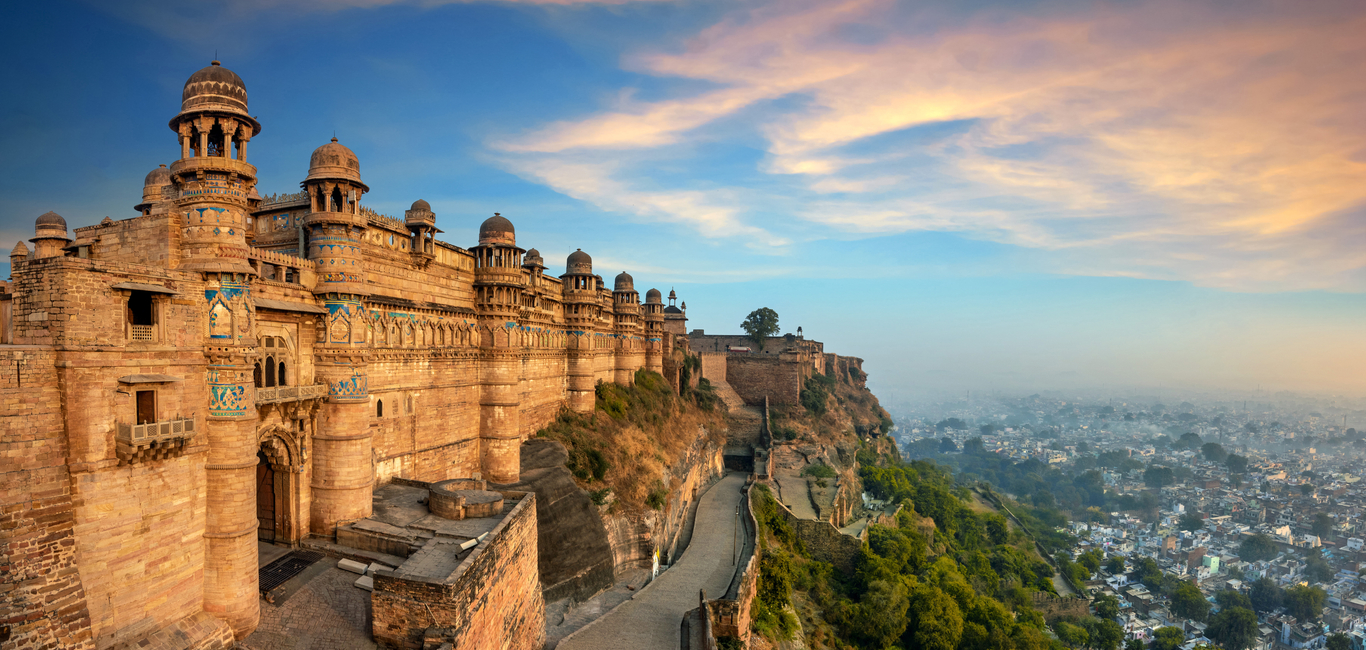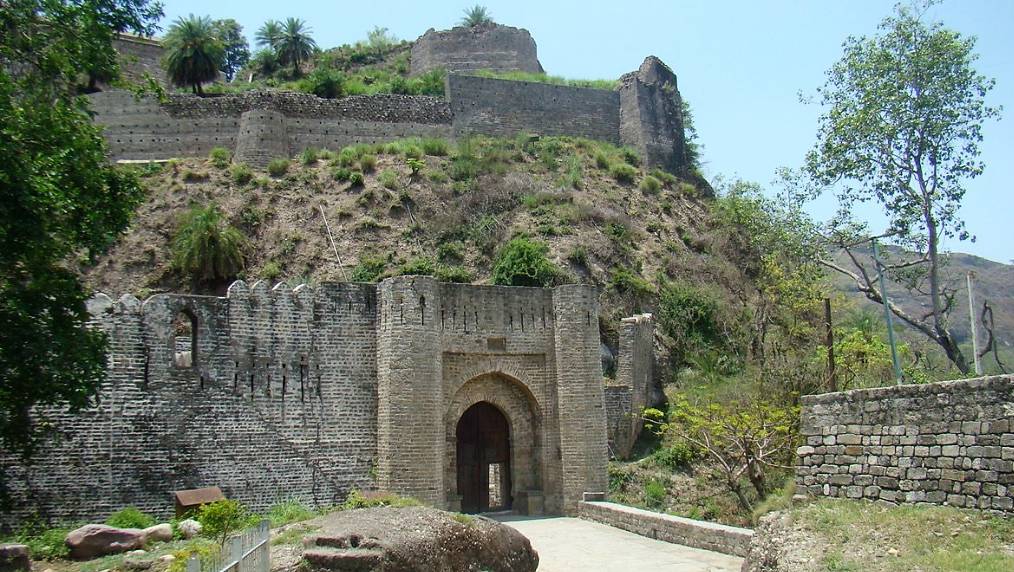Jagannatha Temple at Puri
The Jagannatha Temple at Puri is one of the major Hindu temples built in the Kalinga style of architecture. The temple tower, with a spire, rises to a height of 58 meters (190 ft), and a flag is unfurled above it, fixed over a wheel (chakra).
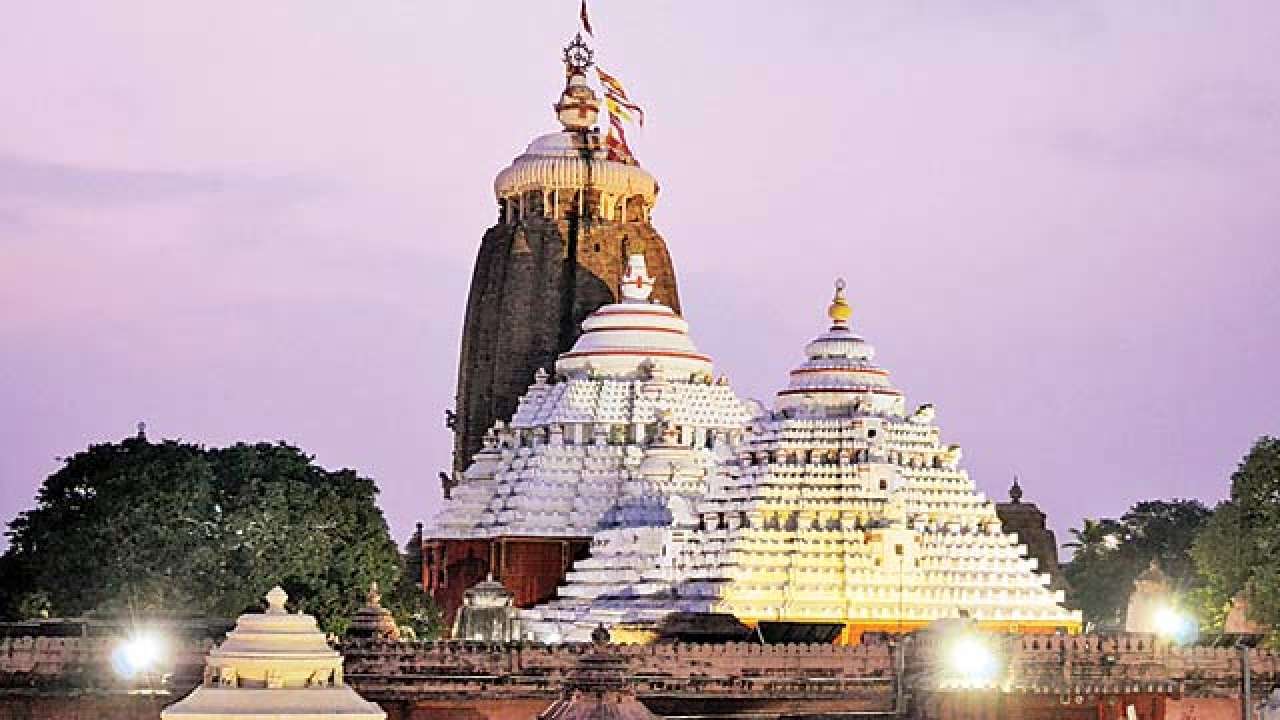 The temple is built on an elevated platform (of about 420,000 square feet (39,000 m2) area),20 feet (6.1 m) above the adjacent area. The temple rises to a height of 214 feet (65 m) above the road level. The temple complex covers an area of 10.7 acres (4.3 ha). There are four entry gates in four cardinal directions of the temple, each gate located at the central part of the walls. These gates are: the eastern gate called the Singhadwara (Lions Gate), the southern gate is known as Ashwa Dwara (Horse Gate), the western gate called the Vyaghra Dwara (Tigers Gate) or the Khanja Gate, and the northern gate called the Hathi Dwara or (elephant gate). These four gates symbolize the four fundamental principles of Dharma (right conduct), Jnana (knowledge), Vairagya (renunciation), and Aishwarya (prosperity). The gates are crowned with pyramid-shaped structures. There is a stone pillar in front of the Singhadwara, called the Aruna Stambha {Solar Pillar}, 11 meters (36 ft) in height with 16 faces, made of chlorite stone; at the top of the stamba, an elegant statue of Aru?a (Sun) in a prayer mode is mounted. This pillar was shifted from the Konarak Sun Temple. The four gates are decorated with guardian statues in the form of a lion, horse-mounted men, tigers, and elephants in the name and order of the gates. A pillar made of fossilized wood is used for placing lamps as an offering. The Lion Gate (Singhadwara) is the main gate to the temple, which is guarded by two guardian deities Jaya and Vijaya. The main gate is ascended through 22 steps known as Baisi Pahaca, which are revered, as it is believed to possess “spiritual animation”. Children are made to roll down these steps, from top to bottom, to bring them spiritual happiness. After entering the temple, on the left side, there is a large kitchen where food is prepared in hygienic conditions in huge quantities; the kitchen is called “the biggest hotel in the world”.
The temple is built on an elevated platform (of about 420,000 square feet (39,000 m2) area),20 feet (6.1 m) above the adjacent area. The temple rises to a height of 214 feet (65 m) above the road level. The temple complex covers an area of 10.7 acres (4.3 ha). There are four entry gates in four cardinal directions of the temple, each gate located at the central part of the walls. These gates are: the eastern gate called the Singhadwara (Lions Gate), the southern gate is known as Ashwa Dwara (Horse Gate), the western gate called the Vyaghra Dwara (Tigers Gate) or the Khanja Gate, and the northern gate called the Hathi Dwara or (elephant gate). These four gates symbolize the four fundamental principles of Dharma (right conduct), Jnana (knowledge), Vairagya (renunciation), and Aishwarya (prosperity). The gates are crowned with pyramid-shaped structures. There is a stone pillar in front of the Singhadwara, called the Aruna Stambha {Solar Pillar}, 11 meters (36 ft) in height with 16 faces, made of chlorite stone; at the top of the stamba, an elegant statue of Aru?a (Sun) in a prayer mode is mounted. This pillar was shifted from the Konarak Sun Temple. The four gates are decorated with guardian statues in the form of a lion, horse-mounted men, tigers, and elephants in the name and order of the gates. A pillar made of fossilized wood is used for placing lamps as an offering. The Lion Gate (Singhadwara) is the main gate to the temple, which is guarded by two guardian deities Jaya and Vijaya. The main gate is ascended through 22 steps known as Baisi Pahaca, which are revered, as it is believed to possess “spiritual animation”. Children are made to roll down these steps, from top to bottom, to bring them spiritual happiness. After entering the temple, on the left side, there is a large kitchen where food is prepared in hygienic conditions in huge quantities; the kitchen is called “the biggest hotel in the world”.
According to a legend King Indradyumma was directed by Lord Jagannatha in a dream to build a temple for him which he did as directed. However, according to historical records, the temple was started sometime during the 12th century by King Chodaganga of the Eastern Ganga dynasty. It was completed by his descendant, Anangabhima Deva, in the 12th century. The wooden images of Jagannatha, Balabhadra and Subhadra were then deified here. The temple was under the control of the Hindu rulers up to 1558. Then, when Orissa was occupied by the Afghan Nawab of Bengal, it was brought under the control of the Afghan General Kalapahad. Following the defeat of the Afghan king by Raja Mansingh, the General of Mughal emperor Akbar, the temple became part of the Mughal empire till 1751. Subsequently, it was under the control of the Marathas till 1803. During the British Raj, the Puri Raja was entrusted with its management until 1947.
The triad of images in the temple is of Jagannatha, personifying Lord Krishna, Balabhadra, His older brother, and Subhadra, His younger sister. The images are made of neem wood in an unfinished form. The stumps of wood that form the images of the brothers have human arms, while that of Subhadra does not have any arms. The heads are large, painted, and non-carved. The faces are marked with distinctive large circular eyes.
The Pancha Tirtha of Puri
Hindus consider it essential to bathe in the Pancha Tirtha or the five sacred bathing spots of Puri, to complete a pilgrimage to Puri. The five sacred water bodies are the Indradyumana Tank, the Rohini Kunda, the Markandeya Tank, the Swetaganga Tank, and the Bay of Bengal also called the Mahodadhi, in Sanskrit ‘Mahodadhi’ means a “great ocean”; all are considered sacred bathing spots in the Swargadwar area. These tanks have perennial sources of supply from rainfall and groundwater.
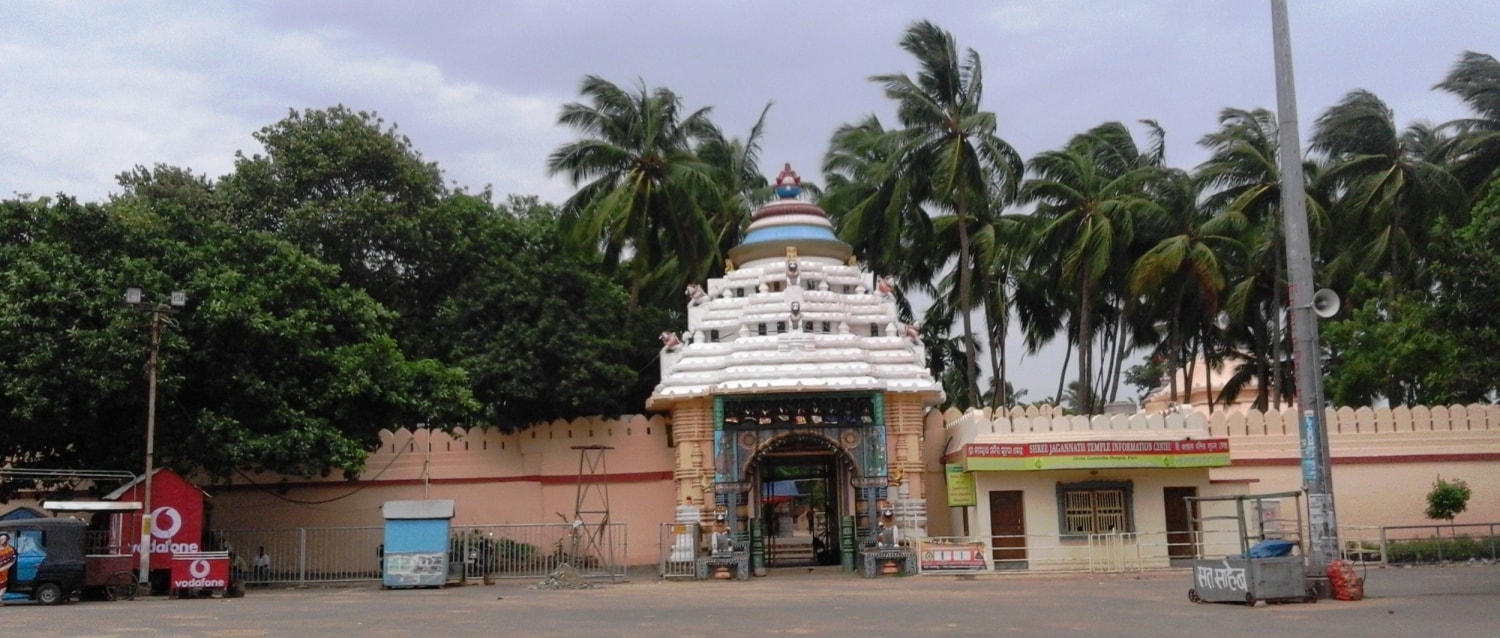 Gundicha Temple
Gundicha Temple
The Gundicha Temple, known as the Garden House of Jagannatha, stands in the center of a garden, bounded by compound walls on all sides. It lies at a distance of about 3 kilometers (1.9 mi) to the northeast of the Jagannatha Temple. The two temples are located at the two ends of the Bada Danda (Grand Avenue), which is the pathway for the Ratha Yatra. According to a legend, Gundicha was the wife of King Indradyumna who originally built the Jagannatha temple.
The temple is built using light-grey sandstone, and, architecturally, it exemplifies typical Kalinga temple architecture in the Deula style. The complex comprises four components: vimana (tower structure containing the sanctum), Jaganmohan (assembly hall), nata-mandapa (festival hall), and bhoga-mandapa (hall of offerings). There is also a kitchen connected by a small passage. The temple is set within a garden and is known as “God’s Summer Garden Retreat” or garden house of Jagannatha. The entire complex, including the garden, is surrounded by a wall that measures 430 by 320 feet (131 m × 98 m) with a height of 20 feet (6.1 m).
Except for the 9-day Ratha Yatra, when the triad images are worshipped in the Gundicha Temple, otherwise it remains unoccupied for the rest of the year. Tourists can visit the temple after paying an entry fee. Foreigners (generally prohibited entry in the main temple) are allowed inside this temple during this period. The temple is under the Jagannatha Temple Administration, Puri, the governing body of the main temple. A small band of servitors maintains the temple.
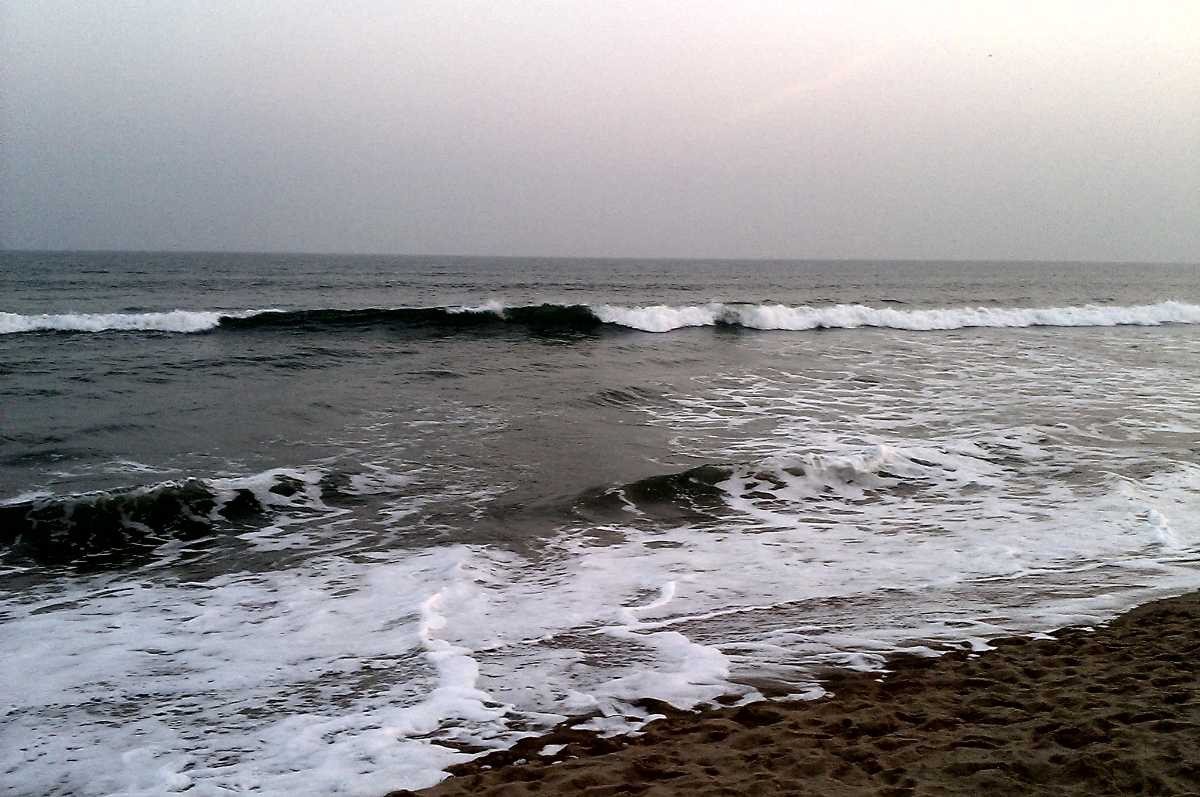 Visit there:
Visit there:
By train – Puri is well connected by Railways. Trains are from Kolkata (Howrah Jn), New Delhi, Ahmedabad, etc. It is also a major railhead on the East Coast Railway, bifurcated from Khurda Road Jn. The Railway Station of Puri is in The heart of the town and near to all hotels. If you arrive by train go to the Odishan State Tourist counter at the station for advice, they are usually very helpful and speak English. The MCO Booth is also quite helpful. Locals speak Odia. Due to the presence of people from various parts of India, there would not be a language problem. Hindi is also widely used. Some locals even speak Bengali. Though ordia is their main language.
AROUND PURI
Balighai (8 kms.)
This Casuarina fringed beautiful beach is a popular picnic spot. Brahmagiri (25 kms.) It is famous for the living shrine of Amarnath. Satyabadi (20 kms.) A visit to the shrine of Lord Sakshigopal here is considered a must for devotees coming to Puri. Baliharachandi (27 kms.) The temple of Baliharachandi (Durga) lies atop a sandy hill near the sea, adjacent to the mouth of the river Bhargavi. The scenic beauty of this place is ideal for a group picnic.


